
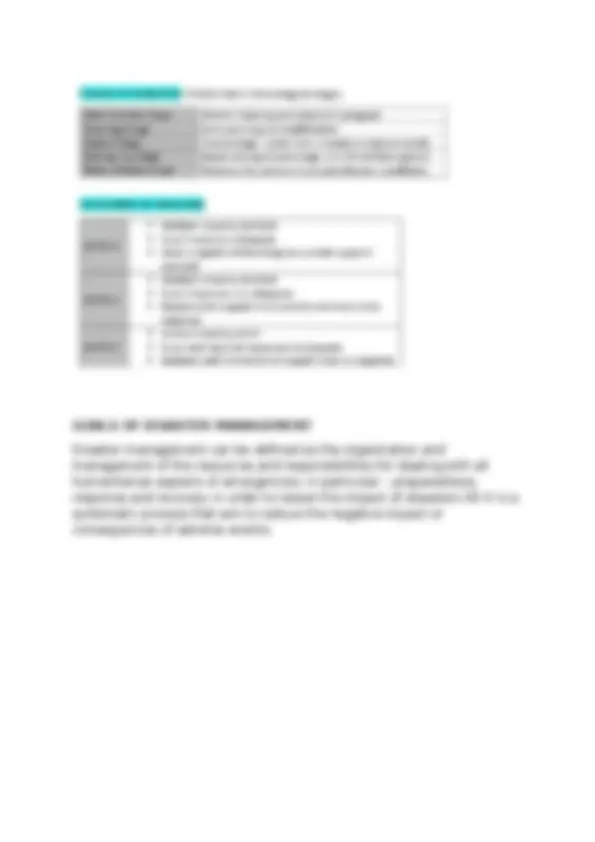
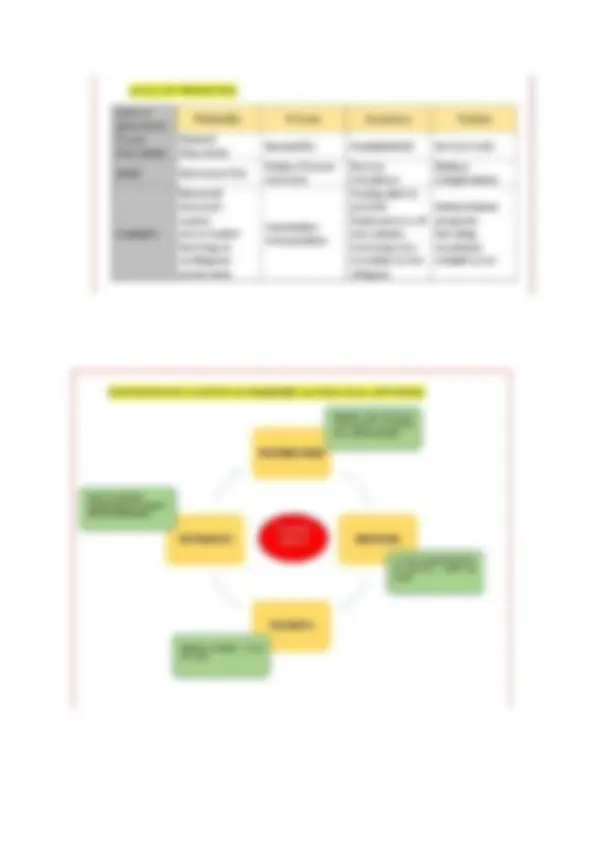
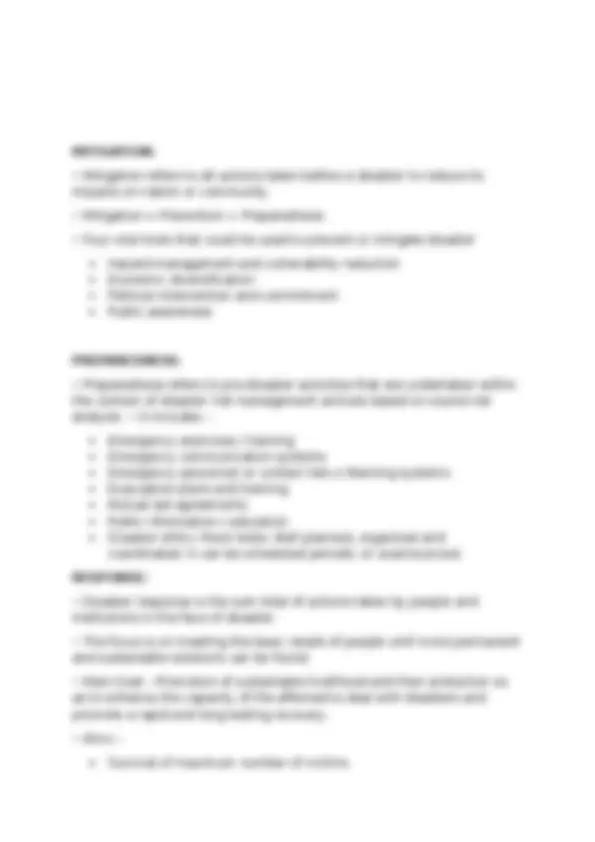
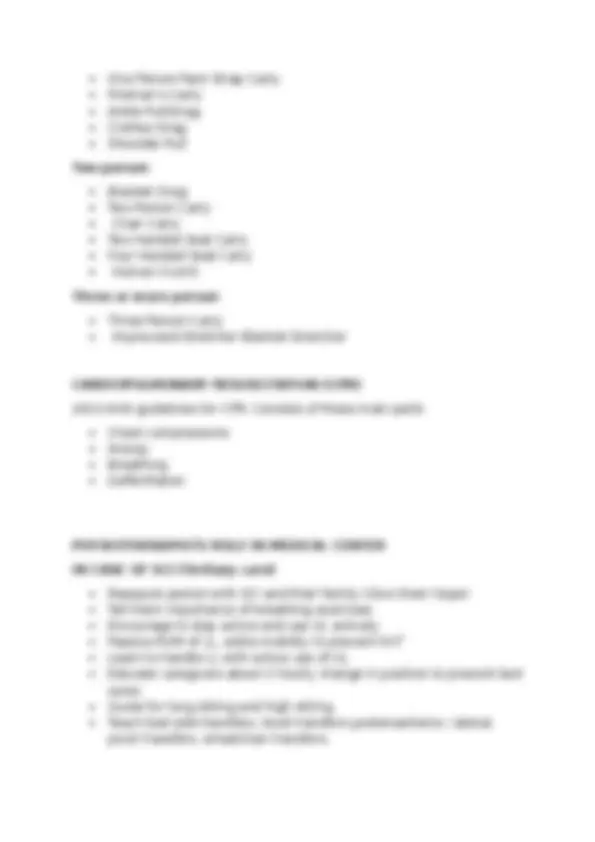
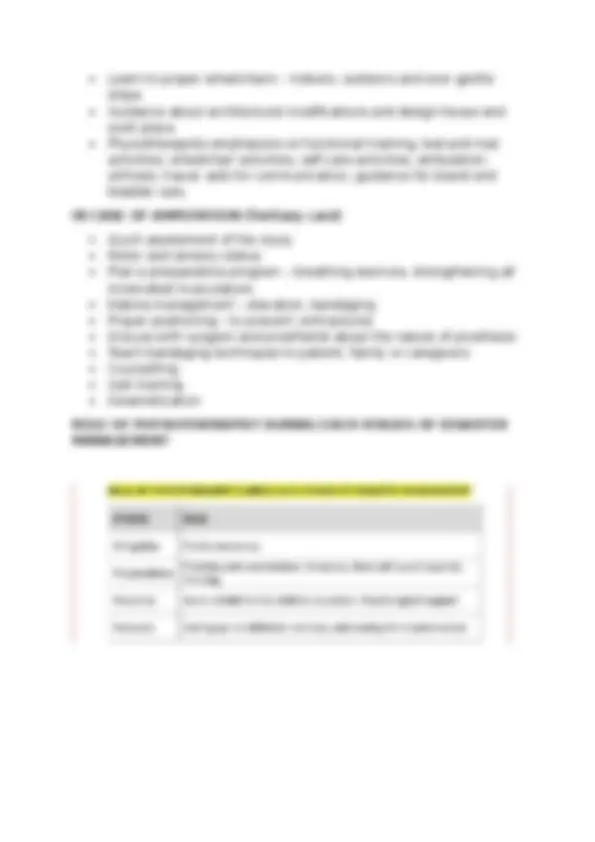


Study with the several resources on Docsity

Earn points by helping other students or get them with a premium plan


Prepare for your exams
Study with the several resources on Docsity

Earn points to download
Earn points by helping other students or get them with a premium plan
Community
Ask the community for help and clear up your study doubts
Discover the best universities in your country according to Docsity users
Free resources
Download our free guides on studying techniques, anxiety management strategies, and thesis advice from Docsity tutors
A comprehensive overview of disaster management, covering key concepts such as hazards, risks, and vulnerabilities. It delves into the different types of disasters, their causes, and the goals of disaster management. The crucial stages of disaster management, including mitigation, preparedness, response, and recovery, highlighting the importance of each phase in minimizing the impact of disasters. It also explores the role of physiotherapists in disaster management, focusing on victim evacuation techniques, cardiopulmonary resuscitation (cpr), and their involvement in medical centers for specific injuries like spinal cord injuries and amputations. This document serves as a valuable resource for understanding the multifaceted nature of disaster management and the various strategies and interventions employed to enhance community resilience.
Typology: Study notes
1 / 9

This page cannot be seen from the preview
Don't miss anything!






Disaster has been defined by the UN as a serious disruption of the functioning of a community or a society involving widespread human, material, economic or environmental losses and impacts, which exceeds the ability of the affected community or society to cope using its own resources. Hazard : It is a dangerous phenomenon or a physical condition that has the potential to cause fatalities, injuries, property damage, loss of livelihoods and services, social and economic disruption, or environmental damage. Risk : Likelihood Consequences (Therefore by decreasing either likelihood or consequences incurred we may reduce the probable risk) Vulnerability : The extent to which a community, structure, service, and/or geographical area is likely to be damaged or disrupted by the impact of particular hazard, depending on their nature, construction and proximity to a disaster-prone area. TYPES OF DISASTER 1 ) Depending upon its nature of occurring Natural Disaster : Result of natural phenomena Further classified on the basis of origin. Anthropogenic Disaster: Result of man's interaction with artificial environment Hybrid Disaster: Arises from linkage of man-made and natural events 2) Depending on the basis of onset Sudden onset
Rapid onset: Little or no warning Slow onset Damaging effects sustained Within hours or days Effects can persist for months Geological and Climatic Hazards: Earthquake, volcanic eruptions Creeping onset Slow onset Effects can persist for months Environmental Hazards: Drought, Famines CAUSES OF DISASTER
The word Triage is of French origin which means selection or categorization • Triage consists of rapidly classifying the injured on the basis of severity and likelihood of their survival with prompt medical intervention. Aim of Triage - To identify priority cases To organize, streamline case management To minimize complications, and save limbs and organs To utilize resources effectively
One Person Pack Strap Carry Fireman’s Carry Ankle Pull/Drag Clothes Drag Shoulder Pull Two person Blanket Drag Two Person Carry Chair Carry Two Handed Seat Carry Four Handed Seat Carry Human Crutch Three or more person Three Person Carry Improvised Stretcher Blanket Stretcher CARDIOPULMONARY RESUSCITATION (CPR) 2010 AHA guidelines for CPR: Consists of these main parts Chest compressions Airway Breathing Defibrillation PHYSIOTHERAPISTS ROLE IN MEDICAL CENTER IN CASE OF SCI (Tertiary care) Reassure person with SCI and their family (Give them hope) Tell them importance of breathing exercises Encourage to stay active and use UL actively Passive ROM of LL, ankle mobility to prevent DVT Learn to handle LL with active use of UL Educate caregivers about 2 hourly change in position to prevent bed sores Guide for long sitting and high sitting Teach bed side transfers, level transfers posteroanterior, lateral, pivot transfers, wheelchair transfers.